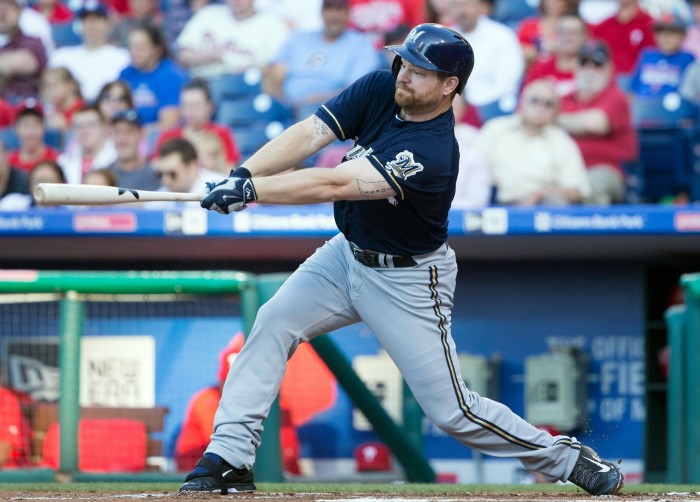It’s understandable to feel a little bit underwhelmed with the Adam Lind trade, in which the Brewers received three raw minor-league pitchers, Daniel Missaki, Carlos Herrera, and Freddy Peralta — all teenage right-handers. Lind was going to be one of the best hitters in the Brewers lineup again in 2016 if he stuck around. Meanwhile, the most likely scenario for the three pitchers the Brewers acquired for him from the Mariners, given their youth and lack of top prospect reputation, is that not a single one of them becomes reliable Major League contributor.
It can feel backwards, because Lind can be a truly special player at times and he will be a key part of Seattle’s lineup next year. Since the beginning of 2013, Lind has hit a ridiculous .316/.389/.523 against right-handed pitching, better than all but 11 hitters to earn at least 900 plate appearances since 2013. The 32-year-old has been better by OPS against right-handed pitching than stars like Andrew McCutchen, Jose Bautista, Robinson Cano and Giancarlo Stanton.
Of course, the flip side is that Lind has been a .193/.245/.279 hitter against fellow southpaws, better than only four Major League players with at least 200 plate appearances against lefties over the past three years: Alexi Amarista, Gregory Polanco, Alex Avila, and Donovan Solano. All those players at least bring something to the table defensively, between versatility and the value of playing tough defensive positions. Lind, however, is a disaster at first base and will likely spend much of his time with Seattle at designated hitter as a result. Combine that with how he requires a right-handed hitting platoon partner and is best used with a position that doesn’t even exist in National League ballparks and you have a potential roster disaster, particularly if a team wants to hold on to a player who is out of options or is already flush with players who are best served in a platoon.
The rub is this: Lind’s offensive performance over the past three years, a .291/.364/.478 line over 1,411 plate appearances with a 130 OPS+, is excellent, but it isn’t ultra-rare. Since 2013, there are 87 players who have taken at least 1,000 plate appearances and recorded a 130 OPS+ or a better, according to the Baseball-Reference Play Index. There are only 15 designated hitter spots in the Major Leagues and 30 first base spots. Talent isn’t evenly distributed, of course — some teams will have multiple hitters who are good enough to earn those spots, some won’t have any, some will be good enough defensively to play other positions — and thus there will always be somebody who needs a hitter like Lind, but the structure of the league gives the team buying Lind or a Lind-esque player significant leverage. That goes double when the player is in a contract year, like Lind will be in 2016.
The idea that the Brewers couldn’t get anything of tangible value back for a player like Lind will never not be disappointing, because the moments when he becomes a transcendant, game-winning player are so obvious — the big home runs, the doubles, the reliable contact against all kinds of right-handed pitchers. But the fact that so many hitters exist who can reproduce his overall performance with significantly better defensive skillsets kills any leverage the Brewers could possibly have in a trade, and the roster gymnastics that have to be performed to get the highest value out of his bat limits the number of realistic suitors even further.
Ultimately, the problem is that Adam Lind is a better baseball player for the spectator than he is for the general manager or the manager, and those players are always going to be the ones who hurt most to trade. The unfeeling market cares not for my appreciation of Lind’s booming home runs or his methodical approach at the plate, and now all we can hope one of those “live arms” they talk so much about actually pans out. Sometimes, unavoidably, rebuilding just feels like getting robbed, and this is one of those times.
